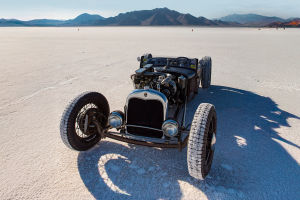Snowmobiles are amazing vehicles that allow us to travel across snowy terrain without the need for specific roads.
Originally designed for practical purposes like snow rescue and monitoring, these vehicles have evolved into a popular recreational tool. In this article, we will explore the history, development, and current use of snowmobiles.
Introduction to Snowmobiles
Snowmobiles are unique machines that run on tracks rather than wheels, enabling them to glide smoothly over snow. These vehicles are commonly used in snowy regions for various activities. Whether it's for rescue operations in ski resorts or for winter outdoor sports, snowmobiles are designed to handle the challenging and unpredictable winter environment.
Development History
The snowmobile was born out of necessity. In 1922, the Canadian company Bombardier developed a rubber track drive mechanism. This innovation paved the way for the first snowmobile, which debuted as a commercial product in 1936. The model, known as the B7, was officially recognized as the first snowmobile. It wasn’t long before Bombardier’s headquarters in Quebec, Canada, became known as the birthplace of the snowmobile.
The development of snowmobiles didn’t stop there. In 1937, the B7 model began its sales journey, and this marked the start of snowmobiles being widely used for both transportation and recreational purposes. Over time, the snowmobile industry grew globally, especially in regions where winter sports were popular.
Growth of Snowmobiles in Japan
Japan played a significant role in the expansion of snowmobiles as a recreational sport. After the first snowmobile racing event was held in Japan in 1970, snowmobiling became widely popular across the country. Japanese snowmobilers quickly embraced the vehicles, leading to increased interest and usage, especially in Hokkaido, known for its heavy snowfalls.
Popular Regions for Snowmobiles
In countries with colder climates, snowmobiles have become essential modes of transport. The northern parts of the United States, Canada, and Japan’s Hokkaido are among the top places where snowmobiles are most commonly used. In these areas, they serve as primary means of transportation in winter, allowing locals and tourists alike to navigate the snow-covered landscape.
However, in tropical climates such as China Hong Kong, snowmobiles are not as common due to the lack of snow. On the other hand, regions with mountainous terrains, like China Taiwan, often have snowmobiles in use during the winter months. Snowmobiling provides an efficient way to traverse challenging, snowy environments that would be difficult for other vehicles to navigate.
Environmental Impact
Despite their practical and recreational uses, snowmobiles are not without their environmental concerns. The vehicles are known to contribute to air pollution and noise, which has raised concerns in certain regions. One notable example is Yellowstone National Park in the United States, where the Bush administration proposed increasing the number of snowmobiles allowed in the park.
This proposal faced significant opposition due to environmental concerns, and it was ultimately struck down by a U.S. Federal Court. The case highlighted the ongoing debate between preserving the environment and providing recreational opportunities, such as snowmobiling, in protected areas.
Final Thoughts
Snowmobiles have truly evolved since their early days in the 20th century. What started as a practical tool for navigating snowy landscapes has now become a key part of recreational winter sports. Today, they continue to be essential in cold regions, bringing excitement to both locals and tourists. However, it’s important to use them responsibly, considering their environmental impact to preserve the beauty of our snowy environments.
Whether you're new to snowmobiling or have been riding for years, we hope this article has ignited your interest in the history and development of these fascinating machines. If you decide to hit the snowy trails, remember to respect nature and enjoy the adventure safely!


